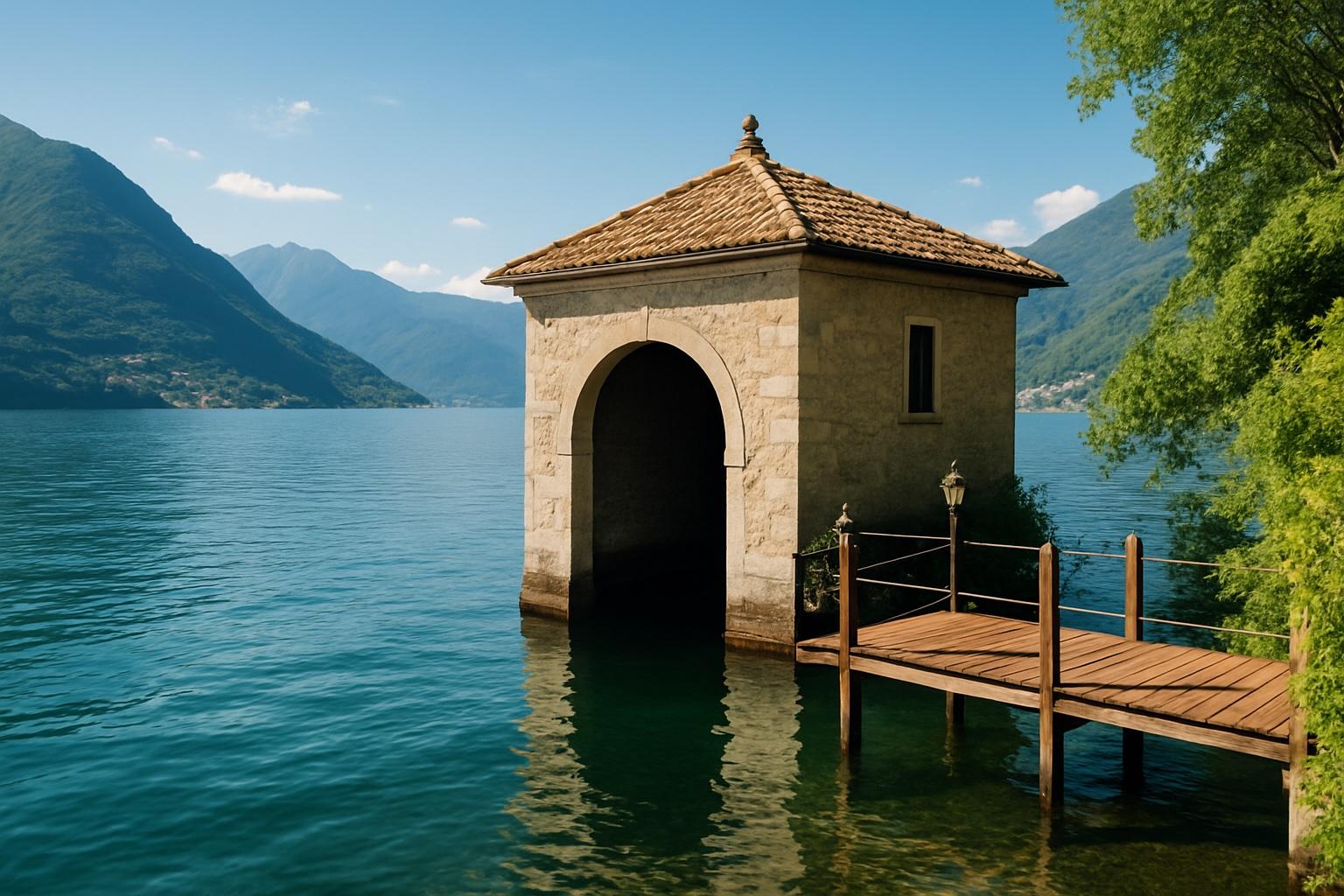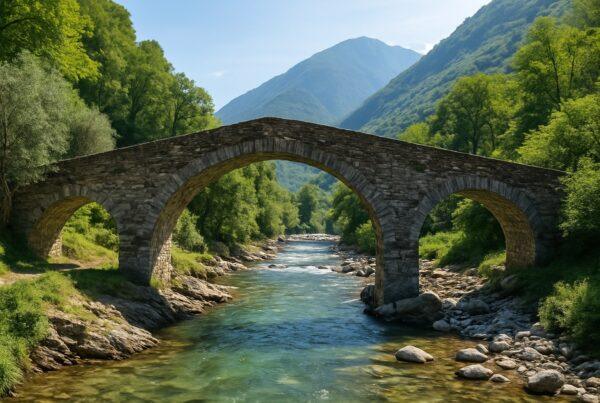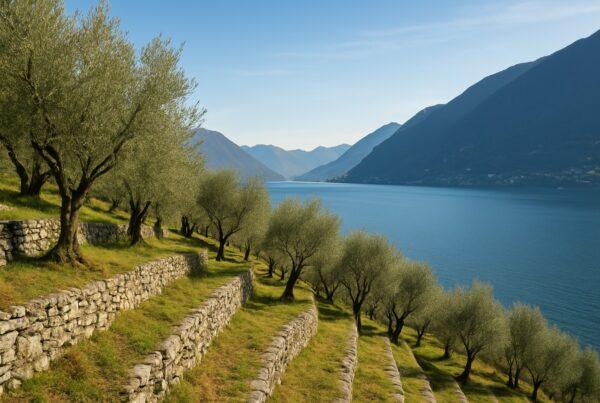Along the shores of Lake Como, where mountains plunge into water and villages cling to narrow strips of land, the architecture often reveals itself quietly. Villas and churches may dominate postcards, but it is the small, discreet structures along the waterline that truly shape the daily life of the lake. Boathouses and docks—stone darsene, wooden jetties, arched shelters—form a subtle but essential part of the landscape. They are spaces of passage, where land meets water, where silence meets movement.
Guardians of the shoreline
The boathouse, or darsena in Italian, is a familiar sight along Lake Como. Sometimes hidden beneath a villa, sometimes standing alone, these structures were built to shelter the most precious possession of lake life: the boat. For fishermen, the boathouse was a working space, storing nets and equipment. For noble families, it was an elegant arch carved in stone, allowing their gondola-style boats to glide directly into water sheltered from storms. The lake’s edge, dotted with these arches, tells of a history where every household depended on the water for trade, travel, or leisure.
The elegance of villa boathouses
Many of the great villas of Lake Como include boathouses as part of their design. Villa del Balbianello, Villa Erba, Villa Melzi—each has its own water access, often framed by arches and decorated with stucco or frescoes. These were not simply functional spaces but also architectural statements. Guests arriving by boat would be received first by the boathouse, a discreet introduction before entering gardens and halls. From the water, these entrances remain some of the most evocative features of the villas, visible only to those who approach by boat.
Docks as stages of daily life
Alongside boathouses, simple wooden docks extend into the lake, sometimes private, sometimes communal. These are places of arrival and departure, of greetings and farewells. Children dive from them in summer, fishermen tie their boats in the early morning, couples sit at dusk with feet dangling above the water. Many are modest, no more than planks on stilts, yet they hold a beauty of their own. They are the punctuation marks of the shoreline, quiet stages where life meets the lake.
The view from the water
To truly appreciate this architecture, one must leave the shore and take to the lake itself. From a boat, the perspective changes completely. Villas reveal their hidden entrances, darsene appear like secret gateways, and docks stretch out like fingers into the water. The rhythm of arches, reflections, and shadows creates a visual poetry that cannot be seen from the road. Looking back toward the villages, the view is transformed: mountains rise higher, rooftops seem softer, and the line between water and land becomes fluid.
This is why experiencing Lake Como directly from the water is unique. The panorama expands in all directions, unobstructed, alive with light. The boathouses and docks, so discreet from land, suddenly become protagonists, their shapes mirrored in the lake. Every ripple, every reflection adds depth to the scene, making the architecture part of a living canvas.
Architecture in dialogue with nature
What makes these structures fascinating is how they blend into the natural environment. A stone arch darkened by centuries of water, a moss-covered dock post, a staircase descending into the lake: these are small but powerful signs of human presence shaped by the landscape. Unlike grand buildings, boathouses and docks are humble, functional, yet they define the relationship between inhabitants and the water. They are architecture that listens, adapting to the lake’s moods—calm, stormy, reflective.
Stories along the waterline
Every boathouse tells a story. Some sheltered fishermen’s boats that set out at dawn, their catches later filling village markets. Others were part of clandestine routes, hiding vessels during wars or smuggling operations. Still others belonged to aristocratic families, where silk merchants or visiting dignitaries would step ashore in style. Over time, many have fallen into disuse, their arches half-submerged, doors weathered, docks broken by waves. Yet even in decay they remain poetic, silent witnesses of centuries of life on the lake.
A photographer’s secret
For those who love photography, boathouses and docks are treasures. Their reflections in the water, especially at sunrise or sunset, create scenes of rare beauty. A solitary dock reaching into mist, or a stone arch framing a boat, captures the essence of Lake Como better than any villa façade. Autumn evenings add another layer: golden light on wooden planks, shadows lengthening across the water, lanterns flickering in the distance. To photograph from the water, even in a simple canoe, is to discover a world invisible from the promenade.
Experiencing them today
Visitors can glimpse many boathouses by taking ferries, but private boat tours or even small rentals reveal more. Gliding close to the shoreline, one notices details otherwise hidden: carved initials on stone, iron rings once used for mooring, stairways descending into the lake. Each village has its rhythm—Cernobbio with its elegant villa docks, Varenna with its rustic wooden jetties, Menaggio with its mix of modern and historic structures. For travelers willing to look closely, the lake edge becomes a museum without walls.
The quiet architecture of the edge
In the end, boathouses and docks are more than practical structures. They are thresholds, places where journeys begin and end, where silence meets movement, where water meets stone. They are modest compared to the villas above them, but without them, the story of Lake Como would be incomplete. To see them is to glimpse the intimate relationship between people and the lake—a relationship built not only on grandeur but also on simplicity.
And perhaps the most unique experience is this: to leave the land behind, sit in a boat at dusk, and watch the shoreline from the water. The lake reflects the arches and docks, the mountains glow with fading light, and for a moment, everything feels suspended. From the water, Lake Como reveals itself not as a postcard but as a living dialogue of stone, wood, and wave.




